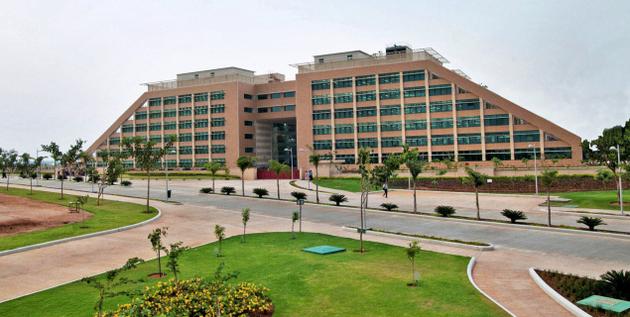Infosys Hyderabad Campus
The 240,000 square-foot Infosys SDB1 Office Building, Hyderabad, is a milestone in air-cooling: half the building uses the standard variable air volume (VAV) systems and the other half is cooled with radiant cooling in slabs. At the design stage, there was serious concern with the radiant cooling proposal: the traditionalists felt, the radiant cooling system would not be able to maintain comfort and that the cool surfaces of the slabs would attract condensation in Hyderabad’s humid months.
Now that SDB1 has been occupied for nearly a year, the results are unequivocal. The VAV (air system) wing uses less than half the energy for cooling and ventilation than Infosys’ other buildings on the Hyderabad campus, but the radiant wing beats that by another 33 percent, in spite of being more densely occupied. Further, the building envelope was insulated, and the windows were shaded, with a goal of avoiding any direct sunlight on the glass. The radiant system has two primary advantages in terms of energy efficiency. First, it takes a lot less energy to move heat by pumping water than by blowing air. Second, the water is chilled to 55 degrees Fahrenheit as opposed to 45 degrees Fahrenheit for the air system, so the radiant system avoids the need to chill those last 10 degrees-the most energy-intensive part of the cooling load.
Read more: FIRST RADIANT COOLED COMMERCIAL BUILDING IN INDIA – CRITICAL ANALYSIS OF ENERGY, COMFORT AND COST
Source text: INFOSYS, HYDERABAD EXPERIMENTS WITH RADIANT COOLING




